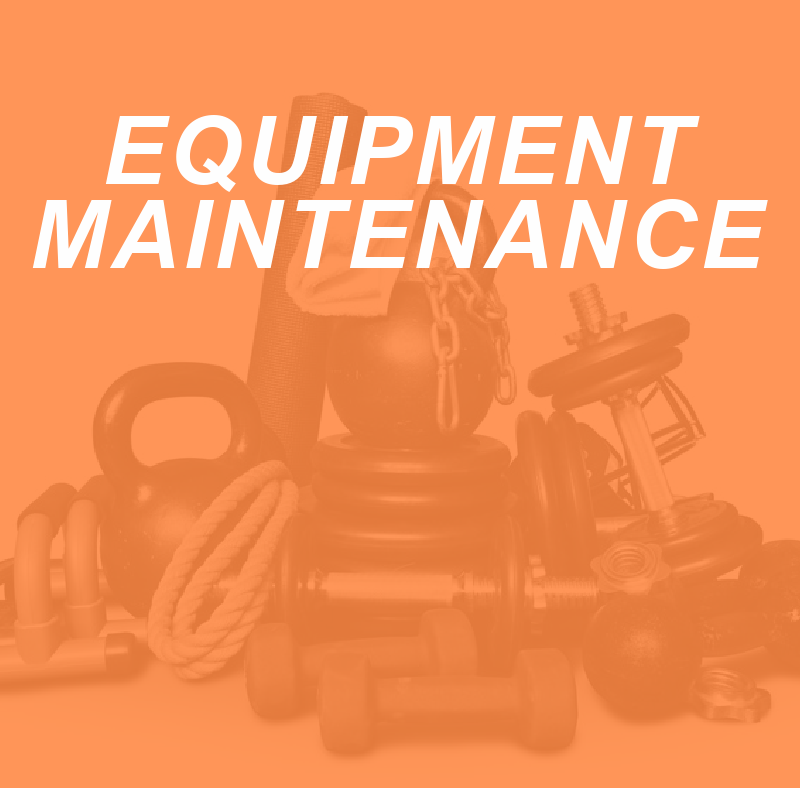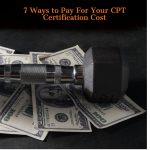
Investing in exercise equipment is an investment in our business as personal trainers. If home equipment is cared for properly, it can last a decade or more. We have checklists for grocery shopping, house chores, and work assignments to keep us on task. Why not have an exercise equipment servicing checklist to ensure it lasts a long time?
Having an exercise equipment servicing checklist can be helpful in making sure equipment is in good shape and up to date. Those of us who use our equipment daily know the need for exercise equipment maintenance. Repeated use and sweat can take their toll, creating wear and tear.
Of course, we all sanitize in between uses, but maintenance goes a step or two further. Some experts recommend a weekly check-in if the exercise equipment is used a lot. A few items to consider servicing:
Types of Exercise Equipment Important to Maintain
Stability Balls
It doesn’t take long before balls lose their air. They take a lot of pressure. Check for leaking holes or tears and refill with air. This includes:
• Stability balls
• Bender balls
• Discs
• BOSU or half-dome balls
• Medicine balls
How much air? If you have the original packaging, following the recommendations. If you don’t have it, it’s generally recommended to fill the ball or disc to the size it was intended to be. So, you will likely need to measure it. After a while, you might be able to gauge the right amount of air by knowing when it feels right.
Resistance Bands
Bands get a lot of stretching wear and tear. Signs of damage include nicks and tears in the bands, which can be hard to see. Inspect closely and replace the bands once these signs are indicated. There’s a risk of the bands snapping, which could cause injury.
Some bands actually dry out over time or when used repeatedly in the heat. You can feel the weathered outside and see the faded color to know when it’s dried up. Time for replacement.
Ropes
Jump ropes and battle ropes fray after a while. Handles can loosen. It’s best to replace them rather than try to repair them.
Foam Rollers
Even foam rollers have a finite life span. Some literally get chunks taken out. Most rollers are rounded with varying lengths and densities. Some have a flat surface underneath. Smooth and textured styles are options, which can affect price. Prices vary from $5-$80.
Sliders
Since sliders are repeatedly rubbed across the floor, the cloth can fray. They are difficult to repair and inexpensive to replace ($10-$15). Once you notice the snags and frayed cloth, go ahead a get a new set or two.
Kettlebells, Barbells, and Dumbbells
Metal varieties of kettlebells, dumbells, and barbells usually hold up for a long time. Just give them a quick clean. Those with plastic or cloth grips do not last as long and might need replacing eventually.
Straps
Straps tend to hold up well, but get dingy and dirty after lots of use and sweat. Most are made with a durable cloth and can be thrown in the washing machine or washed by hand. Check the packaging for care recommendations.
Suspension Straps
It is usually recommended to hand wash suspension straps, pat dry, and let them air out. Ensure the handles are secure and there are no frays in the straps.
Cleaning Exercise Equipment
We leave the wiping of used equipment to gym-goers, but naturally, not everyone can be relied upon to do this. And also, they are not expected to wipe surfaces that they did not touch. Therefore, gym and studio owners are responsible for making sure all surfaces of their equipment is maintained and clean. One factor to bear in mind is the type of equipment being used between clients that can help mitigate the harboring of germs—porous equipment vs non-porous equipment.
Types of Porous Equipment
Lots of gyms have chosen to eliminate porous equipment altogether as a precaution since they are so much more difficult to clean. Check CDC guidelines for specific EPA-approved disinfectants and recommended methods for cleaning all types of equipment.
Types of porous equipment include:
• Mats
• Foam rollers
• Weighted bars with padding
• Straps
• Bands
• Blocks
How does this impact trainers? Consider safe practices in your home gym, while following state and federal guidelines. You may choose not to use these types of equipment at all and opt for a no-equipment workout.
We all have our favorite types of equipment for use with our own workouts, as well as working with clients. Several of mine fall into this “porous” category.
Alternatives
What can we as trainers do if we want to incorporate this equipment in training sessions? If you are currently training individuals who are able and willing to purchase the equipment, encourage them to go ahead and do that. This will give them the opportunity to work out at home to complement the training more effectively. Plus, they bring their equipment to training sessions. Make suggestions as to which ones would be most helpful based on the client’s needs.
For future clients, you might want to stock up on items you find on sale. Like buying several blocks or straps to have on-hand. By doing this, you choose the equipment you prefer. Keep a sealed supply of the equipment with pricing to be reimbursed to you when you take on new clients. This provides a convenience to the clients. Also, buying ahead of time allows you the time to shop for deals saving a few bucks. A quick Google search pulls up plenty of options for online purchases.
By having clients use their own exercise equipment, it eliminates sharing equipment between clients. Of course, disinfecting is still important. Gym life and training may look a little different these days, but it can still work! As fit pros, we can embrace these challenges to do what’s right for our clients.
References
https://www.sportsrec.com/12682214/how-much-air-should-go-into-an-exercise-ball
https://www.joom.com/en/best/workout-sliders
https://reviews.chicagotribune.com/reviews/best-foam-rollers
https://www.lotuskitty.com/how-to-clean-trx-straps/
https://healthyliving.azcentral.com/long-should-exercise-equipment-last-19839.html
https://www.prevention.com/fitness/workout-clothes-gear/g28074559/best-foam-rollers/







